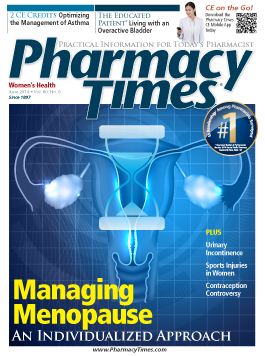The Heroin Epidemic and Abuse-Deterrent Formulations
It's no surprise that heroin, readily available and at prices far lower than those of pharmaceuticals, is the abuser's current drug of choice.

It’s no surprise that heroin, readily available and at prices far lower than those of pharmaceuticals, is the abuser’s current drug of choice.
There is no doubt that the huge heroin epidemic in the United States is not confined to the inner city, but has blossomed into suburbia and rural America. It is responsible for countless overdose deaths; meanwhile, abuse-deterrent formulations (ADFs) have come to the forefront of the abused pharmaceuticals arena, making drugs such as OxyContin less desirable on the street market.
The heroin of today is far different than the heroin of the late 1960s and early 1970s, when it was less than 10% pure. Today’s heroin is significantly more pure than its predecessor, sometimes reaching 60% to 70% pure, and it is capable of being successfully snorted in addition to being injected. I think this ability to snort heroin can be somewhat misleading to frequent users who may think they are not really addicted since they don’t inject this potent opiate.
In August 2010, the prescription drug abuse world changed considerably when reformulated OxyContin was made available in retail pharmacies across the nation. Whether a coincidence or not, law enforcement saw the distribution of cheap and readily available heroin begin to engulf the streets about 3 to 6 months prior to the launch. The cartels from Mexico were beginning to flood the market with cheap, potent heroin that was crossing the Southwest border states and making its way across the country.
More recently, these same drug dealers from south of the border began to add clandestinely manufactured fentanyl to the heroin to boost the potency at a low price, causing the already high overdose death rate to soar even higher in many locations. My task force undercover officers purchase drugs almost daily, and about 50% of the heroin sent to our crime lab recently has contained clandestinely made fentanyl. This, of course, is an incredibly dangerous combination of drugs, so the increase in overdose deaths was predictable.
The question remains as to whether the launch of an ADF extended-release oxycodone resulted in the current heroin problem, or was it merely a coincdence that cartels ramped up cheap and potent heroin just as the pharmaceutical was emerging on the retail market?
My strong inclination is to say that those in the heroin trafficking business are far smarter than we give them credit for. My assessment is that they very clearly saw an opportunity to maximize distribution of their deadly product to people addicted to opiates and began to flood the illegal drug markets with this substance. This is no different from worldwide corporations constantly assessing their market today and doing whatever they can to expand or take advantage of trends to maximize profits in the future.
Although I concede that this scenario is very likely not the only reason for the increased heroin supply and epidemic, I think it was certainly part of the marketing strategy of drug dealers. Satisfied customers spread the word in the world of abuse and addiction, with low-level dealers promoting their products, often by bragging about overdose deaths as a sure sign of some “good stuff.” Drug abuse is a complex matter. If it weren’t, we would have solved this problem decades ago.
Of course, it seems ludicrous to blame pharmaceutical companies for the resurging heroin problem due to their ADF efforts, but blame has been cast. It’s a “damned if you do, damned if you don’t” sort of predicament.
The bottom line is that we have a significant pool of opiate addicts who will swing to whatever drug is readily available, potent, and least costly to get their high. With heroin prices far less than those of pharmaceuticals right now and no hurdles such as doctors and pharmacists to scam, we shouldn’t be surprised that heroin is the abusers’ drug of choice in 2014. Unfortunately, it is a deadly choice that is not easy to combat.
Cmdr Burke is commander of the Warren County, Ohio, drug task force and retired commander of the Cincinnati Police Pharmaceutical Diversion Squad.

